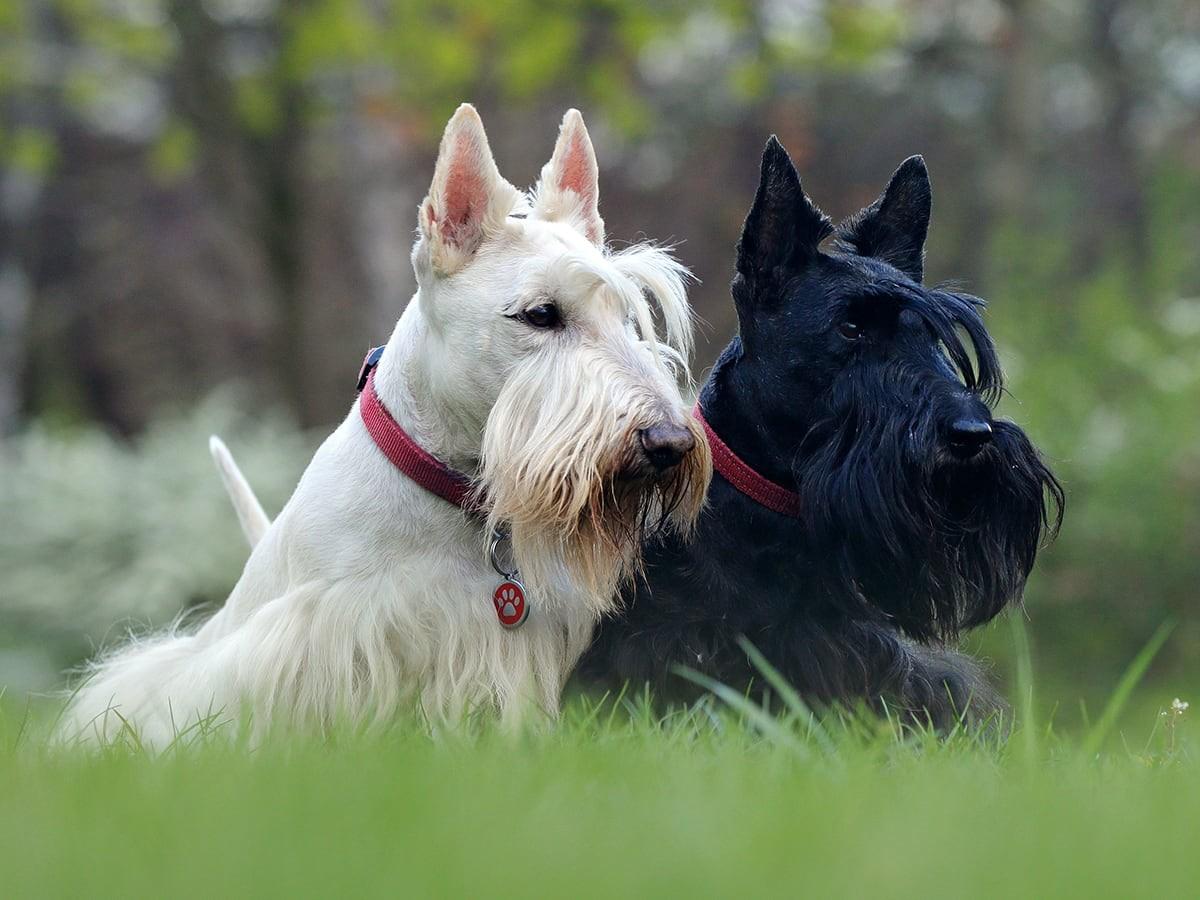It looks like you just saw your dog glide through the shadows like a stealthy ninja while you kept stubbing your toe on every piece of furniture at night when the lights were off. Your dog may not have superhero powers, but they do have much better low-light vision than you, probably better than the latest iPhone too.
Dogs and their vision are fascinating to study. On one hand, they see fewer colors than we do since they are red-green color blind. On the other hand, they have superior night vision, wider peripheral vision, and 10 to 20 times greater motion sensitivity than humans. Dogs are also slightly near-sighted, which means distant objects can appear blurry to them. If they were human, they’d probably need glasses.
Now you know why most hunters wear orange or green as these colors are not visible to dogs!
How Do Dogs See In The Dark?
Dogs may see fewer colors, but evolution gave them an edge when it comes to seeing in dim light. Since dogs are naturally more active at dawn and dusk, their eyes have adapted to function better during those times. Here’s how:
More rods – Dogs have more light-detecting cells called rods in their eyes than humans do. These help them distinguish between light and dark and make them more sensitive to dim light.
Pupil size – Their larger pupils allow more light to enter, improving vision in low-light environments.
Tapetum Lucidum – This reflective layer behind the retina acts like a mirror, bouncing unabsorbed light back toward the retina to enhance visibility. This feature also causes the glowing “eye-shine” effect when you photograph your dog in the dark.
On top of this, dogs’ heightened motion sensitivity allows them to detect even the slightest movement or posture change, which helps them navigate better when visibility is low.
How Well Can Dogs See In The Dark?
Dogs can’t see in complete darkness. Their ability to see in the dark relies on available light, and without any light to reflect into their eyes, even their advanced vision can’t help.
In dim environments, dogs can still see better than humans, but their depth perception and fine detail recognition decrease. Colors appear muted or washed out compared to how they would look in daylight.
Conclusion
Dogs have far better night vision than humans thanks to their unique eye structure, but they still can’t see in total darkness.
If you’re a pet parent, understanding how your dog sees can help you create a safer environment for them. Try to keep furniture in the same layout, avoid leaving obstacles on the floor, and use a child gate to block stairs at night. These small adjustments can make it easier for your dog to navigate safely when the lights go out.
Spot Pet Insurance
Now that we're on the topic of dogs vision, it's important to know that while dogs have great vision capabilities, they may also be prone to several eye problems like cataracts, glaucoma, Progressive Retinal Atrophy (PRA), and more. While you may do everything to help ensure your dog’s health, some conditions are hereditary and cannot be controlled. This is where pet insurance can help you with the eligible veterinary expenses, so that you can get the best treatment and care for your dog.
Dog Insurance can help provide financial assistance for eligible veterinary care in case of unexpected accidents, illnesses, or injuries. Our plans can help pet parents manage the eligible costs of covered veterinary care and help ensure that their pets can receive the best treatment possible. Here are some ways that Spot pet insurance plans can help:
Covers Unexpected Veterinary Costs: Spot pet insurance plans cover the eligible costs of unexpected veterinary treatments, such as emergency surgeries, X-rays, and prescription medications for covered conditions.
Customizable Plans: Choose your annual limit, reimbursement rate, and deductible from a range of options, and create the plan that will fit the needs of your pet and your budget.
Peace of Mind: With Spot pet insurance plans, pet parents can know that they can provide the best care for their pet with less worry about the cost.
To learn more about Spot Plans or to get a free quote, click here.

Creative manager by day, pet enthusiast all the time! After 19 years with my dog (hopefully he wins the award for oldest pet in the world), I enjoy spending my days brainstorming tail-wagging content, and sniffing out the latest trends in the pet world.
Joyner, M., DVM. "How Do Dogs See The World?" PetMD, 29 Oct. 2021, https://www.petmd.com/dog/general-health/how-do-dogs-see-world.
Meyers, Harriet. "Can Dogs See in the Dark?" American Kennel Club, 22 Aug. 2023, https://www.akc.org/expert-advice/lifestyle/can-dogs-see-in-the-dark/.
Lurssen, Neil. "Can Dogs See Better In the Dark Than Humans?" Marin Humane, 30 Jan. 2025, https://marinhumane.org/can-dogs-see-better-in-the-dark-than-humans/.
The information presented in this article is for educational and informational purposes only and does not constitute or substitute for the advice of your veterinarian.












